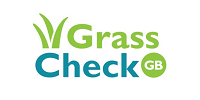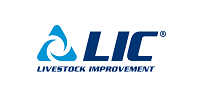- Home
- Knowledge library
- Forage for Knowledge
Forage for Knowledge
Make the most of your farm's potential with the latest regional grass growth and quality data and analysis, updates and resources.
Stay updated with the latest advice to make informed decisions, whether it's about adding an extra paddock for silage and assessing its impact on demand or ensuring that the growth rate aligns with your requirements.
Utilise the grass growth wedge to gauge potential surpluses or deficits and adjust your strategies accordingly.
Access the Forage For Knowledge database and resources to effectively manage risks and enhance your decision-making process.
Latest grass growth data
Use the interactive dashboard to view the latest regional grass growth and quality data.
Grass growth commentary and advice
Pasture to Profit consultant Piers Badnell will provide comments (usually, every two weeks) throughout the main grass growing season. Read the latest below.
25 April 2024
Persistent cold winds are keeping temperatures low, resulting in purple tips on leaves—a sign of cold stress—which is hampering growth.
This week's average growth, at 40 kg DM, mirrors last week’s almost identically.
In comparison to the same date in 2023, we're 21 kg DM below, and 17 kg DM below the average from 2017–2022. Once warmer weather arrives, we can anticipate a significant growth spurt.
When examining average cover data, we observe a wide range from 1748 to 3108 kg DM ha.
I have seen this range amongst my clients and discussion group members, those experiencing very heavy covers tend to have heavy land that is still too wet for machinery to manage surplus. In such cases, patience is key as we wait for drying conditions, which can be frustrating.
Grazing what's possible is the only immediate action, though even at the lower end of the spectrum, these covers will remain substantial, compromising residual levels.
Nevertheless, we can reinstate these residuals through a combination of silage cutting when conditions permit, a bit of pre-mowing, and reintroducing cattle at lower covers of 2500/2600. It's a situation where we do what we can.
Conversely, low average covers, driven by minimal growth and excessive demand, suggest a failure to adapt rotation plans to the changing conditions. Reviewing both autumn and spring rotation plans is crucial here.
Extremely low average covers now will result in reduced growth for the season. However, a rise in temperatures can increase growth for example 20, 30 growth above demand can change things quickly.
While the BBC's long-range forecast predicts warmer weather over the weekend, it advises cooler temperatures into early May.
Therefore, supplementing now to reduce demand and allow growth to surpass demand and build cover on average covers below 2000 kg DM ha is advisable.
Low average covers lead to more of the platform being at the 1 and 2 leaf stages, exacerbating the growth issue. Increasing the average cover by 100 kg DM will yield an extra 7 kg DM ha growth per day.
Transitioning from round 1 to round 2, it's beneficial to blend grasses, especially if you're alternating between 12-hour breaks at night for the first round and daytime for the second round.
The grasses from each round differ in characteristics, with the first round being slower-grown and higher in fibre, while the second round is leafier with less fibre.
I've observed some spring-calving cows with lower body condition scores lately, likely due to the challenging spring conditions. While they may consume concentrate more slowly, drier conditions and good-quality grass can aid these cows.
In severe cases, consider milking affected cows once a day, though it takes about 10 days for metabolic benefits to become apparent. Continue feeding these cows as if they were being milked twice a day.
During wet weather, if you've been feeding higher levels of concentrate, reduce this gradually rather than abruptly.
For autumn calvers drying off in June, check for thin cows, particularly among first and second-lactation animals. These cows could benefit from a longer dry period to improve condition.
Providing some extra care to these animals now will yield dividends in their production and fertility in the next lactation.
Disclaimer
This data set also includes grass growth and quality data from the AHDB-sponsored beef and sheep GrassCheck GB contributors in England.



Latest grass articles and case studies
Useful resources and information
Topics:
Sectors:
Tags:


